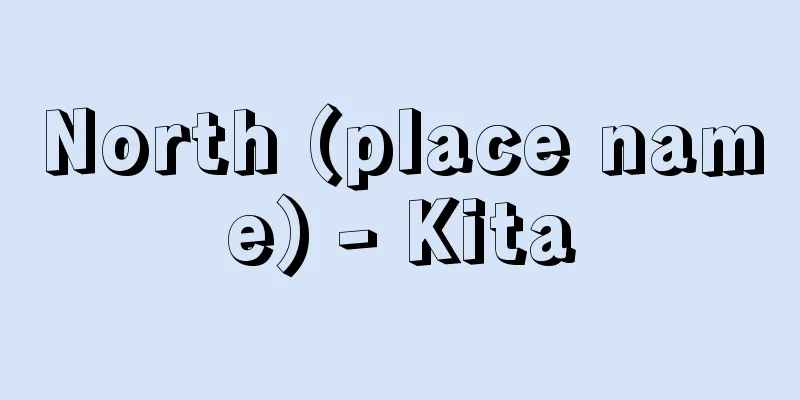Administrative village - Gyoseison

|
A village is a village that was established in an artificially created area. In order to improve administrative efficiency, a larger area than the old village was set and it was established as an administrative unit. It is the opposite of a natural village. In Japan, the town and village system was established in 1888 (Meiji 21) along with the city system, and came into effect in 1889. The old villages (present-day oaza) were village communities with long histories, based on cultivated land, and were natural villages that were connected by people with local ties and blood relatives, centered around the same shrine. After the Meiji Restoration, the administrative districts changed several times due to the large and small district system (1872) and the County, Town, and Village Organization Act (1878), but when the town and village system was implemented (1889), several natural villages were merged, and new villages were born that carried out administration through the self-government of their residents. After that, there were occasions when towns and villages merged individually, but after the Second World War, government policy promoted town and village mergers nationwide, mainly in 1954 (Showa 29), and the administrative areas were expanded, and the number of administrative villages has now decreased significantly. After the establishment of administrative villages, village administration was carried out under the town and village system, and especially after the town and village system of the Meiji era, many aspects, including administration, have changed compared to the natural villages that had continued since before. However, the dates of shrine festivals and contributions to various village expenses are decided according to the traditional methods of each natural village, and district community centers, which have become common in recent years, are often set up for each former village. [Yukio Asaka] Source: Shogakukan Encyclopedia Nipponica About Encyclopedia Nipponica Information | Legend |
|
人為的に制定された地域に成立している村をいい、行政上の効率を増進するため、旧村よりもより広い地域を設定して、それを行政上の単位として成立している。自然村に対する用語。日本では1888年(明治21)に町村制が市制とともに制定され、89年から施行された。旧来の村(現在の大字(おおあざ))はそれぞれ古い歴史をもった村落共同体で、耕地を基盤とし、同一の神社を中心として、地縁者、血縁者で結合された自然村であった。それが明治維新後、大区・小区制(1872)や郡区町村編制法(1878)などによって行政区域が幾変遷したが、町村制施行(1889)にあたって自然村が数個合併し、住民の自治によって行政を進める新しい村が生まれた。その後、個別的に町村間に合併が行われることがあったが、第二次世界大戦後、政府の方針で1954年(昭和29)を中心として全国的に町村合併が促進され、行政地域の広域化が図られ、いま行政村数は著しく減少している。こうして行政村成立後は、村行政は町村制によって行われることとなり、ことに明治の町村制後は、以前から続いてきた自然村に比べて、行政面をはじめとして変容した部分が少なくない。しかし、神社の祭礼の日取りや村内の諸費用醵出(きょしゅつ)などについては、自然村ごとの伝統方式で決められ、近年普及している地区公民館も旧村ごとに設けられる場合が少なくない。 [浅香幸雄] 出典 小学館 日本大百科全書(ニッポニカ)日本大百科全書(ニッポニカ)について 情報 | 凡例 |
<<: Administrative agency - gyoseicho
>>: Administrative litigation - gyosei sosho
Recommend
stage director
…Originally, in Europe and the United States, it ...
Iris xiphium (English spelling) Irisxiphium
…[Hiroshi Aramata]. … From [Iris] …[Tetsuichi Yah...
AEG Telefunken General Electric Company (English)
…Its official name was Allgemeine Elektricitäts‐G...
Ninth day - Okunchi
There is a custom in various regions of holding an...
Sanmai - Scattered rice
〘 noun 〙 When performing a Shinto ritual, rice is ...
stannite
…A mineral whose main component is tin. There are...
Sen'yasetsu - Sen'yasetsu
One of the three major cosmological theories of a...
Koishikawa
A district in the southwest of Bunkyo Ward, Tokyo...
Sentimentalism - Sentimentalism
Generally translated as "sentimentalism,&quo...
Festspielhaus Bayreuth (English spelling)
…Premiere of R. Strauss's Die Frau ohne Schat...
Nursery rhymes
…the name of a collection of traditional British ...
Thujopsis
...the subfamily Cupressaceae, which has fleshy c...
Satsumaage - Fish cakes
This is fried kamaboko made by deep-frying paste ...
External photoelectric effect
When light is shone on the surface of an object (u...
Dysmyelinating disease
…However, among the conditions that cause only th...









